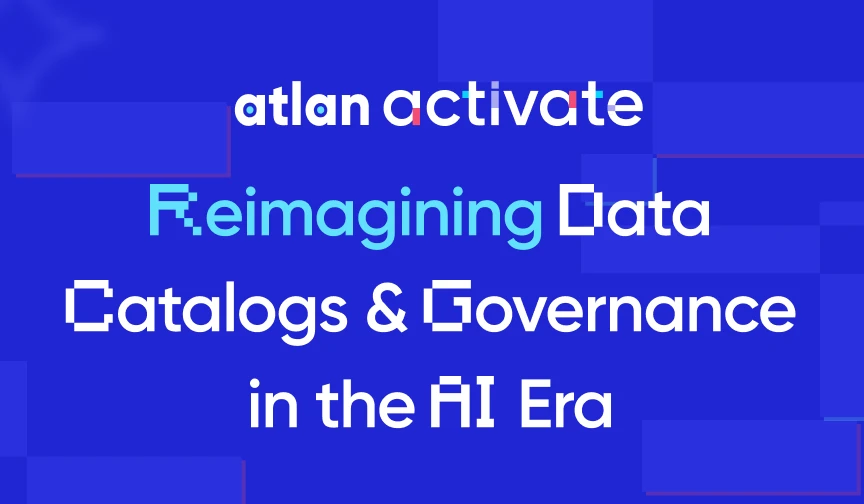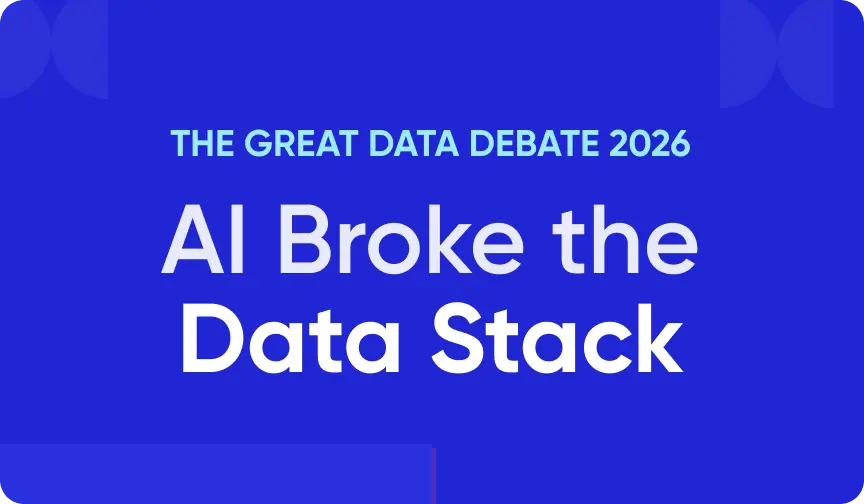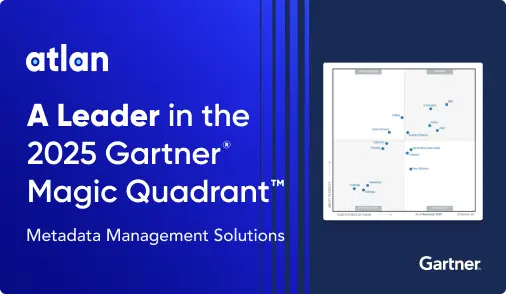Data Breach Prevention Tools Explained [A 2025 Guide]

Last Updated on: June 30th, 2025 | 9 min read
Unlock Your Data's Potential With Atlan

Quick Answer: What is a data breach prevention tool?
Permalink to “Quick Answer: What is a data breach prevention tool?”A data breach prevention tool helps organizations detect, prevent, and respond to unauthorized access, exposure, or exfiltration of sensitive data. These tools monitor data activity, enforce access controls, flag anomalies, and secure systems and endpoints where data resides, whether on-premises or in the cloud.
Data breaches can result from external threats (e.g., hackers, malware) or internal risks (e.g., accidental sharing, misconfigured permissions). Prevention tools are designed to identify vulnerabilities, minimize the attack surface, and ensure sensitive data remains protected across its lifecycle.
Up next, you’ll explore how data breaches occur — especially internal ones — and how tools can help prevent them. You’ll also learn how a unified metadata control plane like Atlan supports shift-left governance, automated compliance, and stronger data security.
Table of contents
Permalink to “Table of contents”- Data breach prevention tools explained
- What are the different aspects of data breach prevention?
- What are some of the most popular data breach prevention tools?
- Why does metadata matter for effective data breach prevention?
- How can Atlan help strengthen your data security posture?
- Data breach prevention tools: Summary
- Data breach prevention tools: Frequently asked questions (FAQs)
Data breach prevention tools explained
Permalink to “Data breach prevention tools explained”Data breach prevention is an umbrella term that spans multiple layers of security, such as infrastructure, network, application, and data. It includes a wide range of data security-related concepts, such as:
- DLP (Data Loss Prevention)
- IAM (Identity and Access Management)
- Enhanced data monitoring
- Encryption
- Endpoint protection
Data breach prevention tools focus on the data layer, helping organizations monitor data flows, spot vulnerabilities, enforce policies, and stop potential breaches before they escalate.
What is the impact of a data breach?
Permalink to “What is the impact of a data breach?”A data breach occurs when data is lost or compromised by an unauthorized actor:
- For an individual, a data breach can result in the loss of personal, financial, and health-related information that can be misused in numerous ways.
- For an organization, a data breach can result in the loss of any data, which can be used for malicious purposes, while also damaging the organization’s image and reputation.
Data breaches are extremely common; thousands happen every month.
Preventing data breaches is a hard task. An organization needs several lines of defence against malicious actors, both internal and external. These lines of defense work on multiple layers, including:
- Network security
- IAM and access control
- Privileged access management
- Encryption
- Data masking and anonymization
- Endpoint security
Data breaches can occur if there’s a significant gap in any of the data breach prevention areas mentioned earlier; however, this article will focus on the aspects related to internal data breach prevention.
What are the different aspects of data breach prevention?
Permalink to “What are the different aspects of data breach prevention?”Typically, most external risks are mitigated by strengthening data security at the infrastructure, network, and application layers. In contrast, data teams and data security and governance tools address internal risks related to data.
The 2025 Verizon Data Breach Investigation Report found that as much as 36% of the breaches are done by internal actors. These data breaches are often caused by:
- Misconfigured systems
- Overly permissive access
- Password sharing
- Lack of granular access controls
- Failure to classify sensitive data
In the next section, let’s look at data breach tool categories and some of the popular tools that help prevent data breaches.
What are some of the most popular data breach prevention tools?
Permalink to “What are some of the most popular data breach prevention tools?”Organizations typically use a mix of tools across the stack:
- Cloud platforms (e.g., Databricks, Snowflake, Microsoft Fabric)
- DLP tools (e.g., Forcepoint, Proofpoint, Nightfall, CrowdStrike)
- Governance tools (e.g., Microsoft Purview, Snowflake Horizon, Unity Catalog)
Let’s explore how this setup works.
Enterprises typically run their data workloads on platforms such as Databricks, Snowflake, and Microsoft Fabric, among others. All of these platforms provide native BYO-type solutions for data breach protection supported by their respective internal functionality.
For example, if you deploy Databricks on Azure, you can build your own data exfiltration solution using VNet Endpoints, Private Link, Managed Identity, and Azure Key Vault.
Implementing this, however, requires a significant effort, not to mention the ongoing maintenance of the solution, which is why organizations typically opt for a tool designed specifically to handle this problem.
Data loss prevention tools (DLP) like Forcepoint, Proofpoint, Nightfall, CrowdStrike, Palo Alto Networks are examples of tools that integrate with SaaS applications to prevent data loss at the API communication layer. These tools are ideal for application integrations, particularly when exposing data via an API to internal or external applications.
Also, read → Data loss prevention 101
However, these DLP tools don’t necessarily work closely with data platforms and data tools, specifically. For that, you’ll need tools that allow visibility into your data ecosystem, such as Microsoft Purview, Databricks Unity Catalog, Snowflake Horizon Data Catalog, among others.
For that, you’ll need tools that allow visibility into your data ecosystem, such as Microsoft Purview, Databricks Unity Catalog, Snowflake Horizon Data Catalog, among others.
But even these data catalogs and governance tools are designed primarily for their native data stacks and don’t often span the whole data ecosystem.
Why does metadata matter for effective data breach prevention?
Permalink to “Why does metadata matter for effective data breach prevention?”A metadata-powered control plane for data can help you answer the following questions thoroughly:
- What data exists in the data ecosystem of the organization?
- Which data assets (tables, columns, fields, etc.) classify as sensitive data?
- Who, within and outside the organization, has access to data?
- Which users have privileged access to data and why?
- What activities are data users performing at a given moment?
- What policies are in place to ensure the data is compliant with any data privacy and protection laws and regulations?
These questions can be answered at any given point by reviewing the individual tool’s configuration and logs; however, this approach is not proactive in securing your data and may lead to human error and gaps in data security, potentially resulting in data breaches.
To answer the key questions mentioned above and strengthen your organization’s data security, you need to leverage the metadata of all your data assets and activate it for data security and governance-related automations.
In other words, you need a metadata control plane for your organization’s data assets. This control plane will protect your data by activating metadata for data security, governance, policy enforcement, and monitoring use cases in a consistent and organization-wide manner.
Atlan is a metadata activation platform built on a foundation of a control plane for metadata. Let’s examine how Atlan can help you enhance your data security posture.
How can Atlan help strengthen your data security posture?
Permalink to “How can Atlan help strengthen your data security posture?”Atlan takes a security-first approach to everything from data and metadata persistence to authentication and authorization, which is well-documented on Atlan’s Help Center. Atlan is also compliant with some of the key IT processes and data standards like SOC Type 2, GDPR, HIPAA, and ISO 27001, among others, which you can access at Atlan’s Trust Center.
Atlan builds on the strong security foundation by utilizing the metadata control plane and providing you a host of data governance and security features that help you secure your data across your data estate, some of which are listed below:
- Automated data governance: Create governance workflows to mitigate misuse by:
- Applying access policies
- Controlling metadata change management based on user roles
- Enforcing compliance with repeatable, trustable processes and approval flows for accessing and distributing data assets
- Automated policy compliance: Ensure your organization’s data follows standards for data quality, privacy, security, and lifecycle. This helps you comply with any geographical or industry-specific laws and regulations for data privacy and protection, such as GDPR, HIPAA, and CCPA.
- Granular permissioning: Control access at the metadata, data, and glossary level using Personas, Purposes, and IdP integrations (SSO, SCIM).
- Tags: Apply tags like Public, Internal, Restricted, and Confidential across systems with bi-directional sync to source platforms.
- Domains and Owners: Define responsibility and access boundaries clearly across teams, units, and data environments. With Domains, you can create domain policies for data access and usage.
The features mentioned above are some of Atlan’s native data security features. Atlan also integrates with tools like BigID for deeper classification, providing a layered defense model that combines visibility, control, and automation.
Learn more about Atlan’s approach to security in Atlan’s documentation.
Data breach prevention tools: Summary
Permalink to “Data breach prevention tools: Summary”Tools, technologies, business processes, and frameworks are rendered useless if your organization’s data isn’t secure. While the infrastructure, networking, and strong authentication and authorization protect your organization from external actors, you need protection from malicious internal actors, as over a third of data breaches involve internal actors.
For that, you need a robust governance framework that is enabled by a tool like Atlan, which has rich features activated by your organization’s metadata via a metadata control plane.
Data breach prevention tools: Frequently asked questions (FAQs)
Permalink to “Data breach prevention tools: Frequently asked questions (FAQs)”1. What is a data breach?
Permalink to “1. What is a data breach?”A data breach is a loss or compromise of data by an internal, external, or a partner unauthorized actor. A data breach can occur due to insufficient provisions in your organization’s infrastructure, networking, security, and governance architecture for data security.
2. What type of data is most at risk of a breach?
Permalink to “2. What type of data is most at risk of a breach?”While all data in an organization is at risk of a data breach, the most valuable and critical data that is at high risk is PII, financial, transactional, and health data, among others. This is why it is important to classify and tag sensitive data in your data estate.
3. How can I protect my organization from data breaches?
Permalink to “3. How can I protect my organization from data breaches?”You need to have a robust governance framework implemented, utilizing a governance tool with advanced data security and governance features that can be consistently applied to all of your organization’s data assets. Atlan does that by leveraging its unified metadata control plane for metadata-based activation of governance and security.
4. What tools are typically used to prevent data breaches?
Permalink to “4. What tools are typically used to prevent data breaches?”Organizations use a mix of DLP tools (e.g., Forcepoint, Proofpoint), access control systems, data catalogs (e.g., Snowflake Horizon, Microsoft Purview), and metadata platforms. These tools collectively monitor activity, manage access, detect anomalies, and protect sensitive data.
5. What’s the difference between DLP tools and metadata platforms?
Permalink to “5. What’s the difference between DLP tools and metadata platforms?”DLP tools focus on preventing data leaks at endpoints or in transit (e.g., email, APIs). Metadata platforms provide visibility and governance across your data estate, helping classify data, assign ownership, and enforce policies at the source.
6. How does a metadata control plane help in breach prevention?
Permalink to “6. How does a metadata control plane help in breach prevention?”A metadata control plane enables centralized classification, access control, and policy enforcement across data systems. It offers consistent visibility, tracks lineage and usage, and automates compliance, making it easier to detect and prevent security gaps.
7. What should I prioritize to improve my data security posture?
Permalink to “7. What should I prioritize to improve my data security posture?”Begin with clear data classification, define access roles and purposes, audit permissions regularly, and use tools that automate governance. Strengthening metadata-driven processes can help you prevent both accidental and malicious data exposure.
Share this article
Atlan is the next-generation platform for data and AI governance. It is a control plane that stitches together a business's disparate data infrastructure, cataloging and enriching data with business context and security.
Data breach prevention tools: Related reads
Permalink to “Data breach prevention tools: Related reads”- Data Quality Explained: Causes, Detection, and Fixes
- Data Quality Framework: 9 Key Components & Best Practices for 2025
- Data Quality Measures: Best Practices to Implement
- Data Quality Dimensions: Do They Matter?
- Resolving Data Quality Issues in the Biggest Markets
- Data Quality Problems? 5 Ways to Fix Them
- Data Quality Metrics: Understand How to Monitor the Health of Your Data Estate
- 9 Components to Build the Best Data Quality Framework
- How To Improve Data Quality In 12 Actionable Steps
- Data Integrity vs Data Quality: Nah, They Aren’t Same!
- Gartner Magic Quadrant for Data Quality: Overview, Capabilities, Criteria
- Data Management 101: Four Things Every Human of Data Should Know
- Data Quality Testing: Examples, Techniques & Best Practices in 2025
- Top Takeaways from Gartner D&A Summit 2025: A 5-Minute Recap
- Gartner Magic Quadrant for Data Quality: 2025 Insights
- Data Readiness for AI: 4 Fundamental Factors to Consider
- Role of Metadata Management in Enterprise AI: Why It Matters
- Atlan Launches Data Quality Studio for Snowflake, Becoming the Unified Trust Engine for AI
- Atlan Launches Data Quality Studio for Databricks, Activating Trust for the AI-Native Era





















